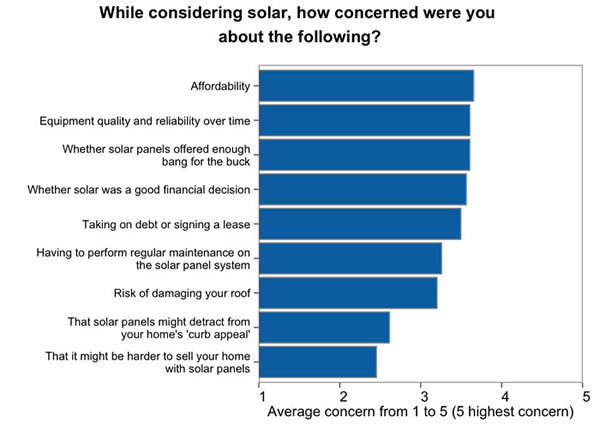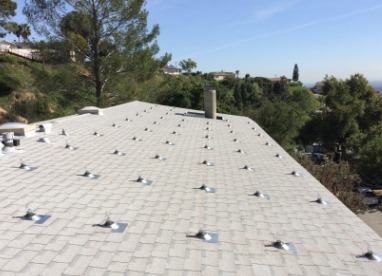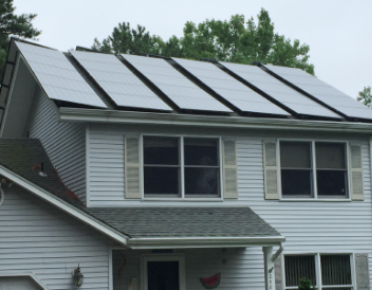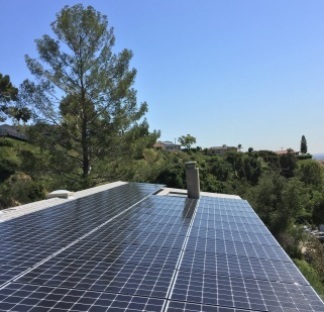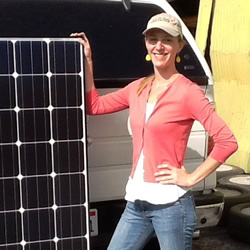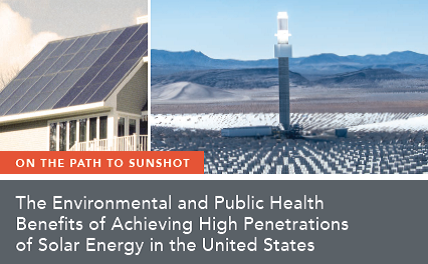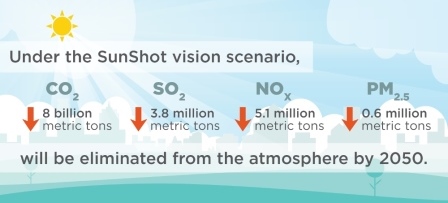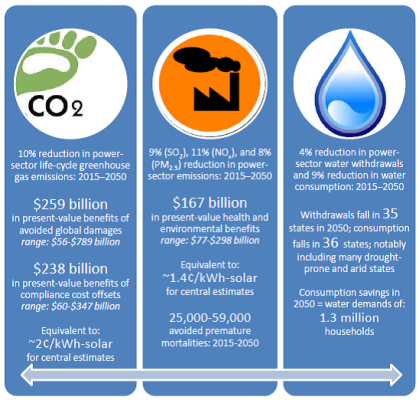Welcome to the
Run on Sun Monthly Newsletter

In this Issue: |
June, 2016
Volume: 7 Issue: 6
Scared of Solar?Advocates of solar, such as the crew at Run on Sun, take it for granted that going solar is win-win for our clients, such as the folks at Chandler School. But sometimes we forget that non-adopters have real concerns about putting solar on their roofs. In this, our last cut on the data that we received from NREL (read our two earlier posts on who chooses Run on Sun and what generally keeps people away from solar), we wanted to address the greatest concerns that people have so that they don't need to be scared of solar. First off, consider this chart: Let's take these concerns one at a time. Cost concernsPerhaps the greatest overall concern turns on cost and its counterpart, value. AffordabilityThe greatest concern expressed was over the affordability of going solar. The good news is that solar has never been more affordable. Back in 2007 when we were first doing installations, solar systems cost more than $8/Watt installed. Today we are at half of that cost, and even though most rebate programs have ended, the federal tax credit is still at 30%, meaning that more and more people can now afford to go solar! Bang for the buckStill, some consumers are concerned about getting enough bang for their buck - they wonder if solar really provides value commensurate with its cost. To that we reply - it depends. It depends on the quality of the equipment that you choose and the quality of the installer who puts that equipment on your home. But how can a consumer know if they are getting quality? It starts by taking the time to do your research - get multiple bids so you have a basis for comparison. Be wary of low-ball bids - prices below market are a clear sign that there will either be nasty surprises by way of change orders down the road, or that your contractor is cutting corners. As to the quality of the contractor doing the work, ask for references and check them. In California, look at the Contractors State License Board website to see if there are complaints against the contractor, and see if they are certified by NABCEP, the gold-standard for quality in the solar industry. Review sites like Yelp and Angie's List can also help. Taking on debt or signing a leaseGoing solar is a significant financial investment and it should be treated as such. We have written at great length about the problems with solar leases, but even a favorable loan, like a home equity line of credit, carries costs. Ideally, savings from your lower electric bill should offset the cost of financing the system, and once the system is paid off, you will continue to derive those savings for the lifetime of the system. When you get a proposal for going solar, it should clearly spell out what your savings will be in Year 1, and provide a reasonable projection for your payback period over time. But be careful about proposals with overly rosy projections based on unrealistic assumptions (like energy costs going up 7% each year for 25 years), or ones that don't disclose their assumptions at all! Reliability & MaintenanceAnother general area of concern turns on how well a solar power system will hold up over time, and what it will cost you to maintain it. Equipment quality and reliabilityIn solar, like most everything else, you get what you pay for, if you're lucky! Every day we get emails inviting us to purchase cut-rate panels at a fraction of the price we pay for top-of-the-line panels from LG. We delete those emails without a second thought because we have no interest in dealing with junk. But someone is buying those panels, and they are ending up on the homes of consumers. Again, get multiple bids and do your research. Selecting quality products from established manufacturers is your best assurance that you will have reliable equipment that will last. (We install LG panels and Enphase microinverters because we believe that they are the best value for our clients.) Performing regular maintenanceWe are always a bit baffled by this one, since a solar power system is largely maintenance free. We think this concern arose because leasing companies promised to perform all maintenance needed for the system, but this is a hollow promise since there is really nothing to do! At Run on Sun we provide a ten-year warranty on our work, and we support the manufacturer's warranties for the parts - so if something does go wrong, it will be fixed with no hassle for our clients. Harm to your homeThe final category of concerns centers around harm to your most valuable asset, your home. Solar, when done right, will improve that value, but that is not guaranteed.
Detract from curb appeal
Make it harder to sell
Fear Not!Consumers need not be scared of solar, provided that they choose a reputable installer and pay for quality equipment. At Run on Sun we specialize in both, so give us a call today! |
“The greatest concern expressed [in the NREL study] was over the affordability of going solar. The good news is that solar has never been more affordable.…”
Get your copy of
Commercial Solar:
Step-by-Step
from
Run on Sun
Founder & CEO
Jim Jenal

Now available on Amazon.com
in both
Print & Kindle versions.
Bonus - Buy the Print version…
Get the
Kindle version for Free!
Commercial Solar:
Step-by-Step
from Run on Sun
Founder & CEO
Jim Jenal

Now available on Amazon.com
in both Print & Kindle versions.
Get the Kindle version for Free!
Help Us Spread the News!


We use Angie's List to assess whether we're doing a good job keeping valued clients happy. Please visit AngiesList.com in order to grade our quality of work and client service.
PWP Rebates Fall August 1!
Here are the current and upcoming rebate rates:
Potential residential or commercial clients, your rebate will drop from 45¢/Watt to 30¢/Watt. That means that for a typical residential project of 5 kW, the rebate will drop from $2,250 to $1,500. Non-profits will leave even more money on the table if they miss the August 1 deadline. For a typical 40 kW school project, the rebate will drop from $36,000 to $24,000! Ouch! If past is prologue, this drop in the rebate amount will create a stampede as folks try to lock in the current rebate rate before it steps down. If you are in PWP's service area, please don't wait, give us a call today! |
|||||||||||||||||||||||||||||||
Solar Power - Doctor's Orders!
While this simple logic proves to me that solar power is a vast improvement over burning fossil fuels, quantifying the environmental and health impacts of solar energy is not a straightforward task. However, determining the value of these external benefits is imperative to understanding the true costs and benefits of solar compared to other sources of energy. Thankfully the Lawrence Berkley National Laboratory (LBNL) recently published a technical report on this very topic! "The Environmental and Public Health Benefits of Achieving High Penetrations of Solar Energy in the United States." was commissioned by the Department of Energy as part of the On the Path to Sunshot series of studies to assess the progress of the SunShot Initiative at its midway point. The SunShot VisionThe SunShot Initiative was launched in 2011 as a result of the Obama administration's goal to make solar electricity cost-competitive with conventional sources of electricity by 2020.
As a result, the industry is approximately 70% of the way toward meeting the SunShot 2020 goal to achieve $0.06 per kilowatt-hour (kWh) installed cost for solar energy systems. ResultsThe researchers sought to unveil the cumulative environmental and public health benefits of the solar power that has already been installed, and what future benefits would result if SunShot's targets - 14% of US electricity by 2030 and 27% by 2050 - are met. They found that health and environmental benefits could add approximately 3.5 cents per kilowatt-hour to the "true" value of solar energy! Lets break down that number... Compared with fossil fuel generators, photovoltaic (PV) and concentrating solar produce far lower lifecycle levels of greenhouse gas (GHG) emissions and other harmful pollutants including fine particulates (PM2.5), sulfur dioxide (SO2), and nitrogen oxides (NOx).
These savings add to the 17 million metric tons of CO2, or $700 million, saved annually by solar already installed by 2014. Other Air Pollutants: Meeting the same targets through solar expansion would also reduce other power sector cumulative emissions of PM2.5 by 8%, SO2 by 9%, and NOx by 11% between 2015 and 2050. The monetary value of which they estimated at $167 billion in savings from reducing health and environmental costs, or 1.4 cents per kilowatt hour of solar. Not to mention avoiding 25,000-59,000 entirely preventable premature deaths! This builds on 2014 solar installations providing annual reductions in air pollutants worth $890 million. Water: Often we forget that traditional sources of electricity are also big water hogs. I even wrote a blog about the ways solar helps to conserve water. The researchers found reaching SunShot's goals could result in cumulative water savings of 46 trillion gallons of avoided withdrawl (4% of total power-sector withdrawls) and 5 trillion gallons of avoided water consumption (9% of total power-sector consumption) between 2015-2050. This is definitely a non-trivial benefit given much of the big solar states are also arid states where water conservation is imperative.
Improving public health and the environment is a lofty goal near and dear to my heart and truly an important aspect of solar's many benefits. Hopefully quantifying the magnitude of solar's "external" impacts will help inform policy decisions by making the "true" costs and values of solar and its economic competitiveness with other energy options more explicit. |
“Improving public health and the environment is a lofty goal near and dear to my heart and truly an important aspect of solar's many benefits…”
Here are some other stories that might interest you:
Down the Solar Rabbit Hole
We recently wrote about the perils of click-bait, solar lead generation sites in our post, Researching Solar? Careful Where You Click! Over the weekend it became clear to me just how pernicious this can be…
Video Release: Making the world better… one roof at a time
Its not every day that we get to unveil a beautifully crafted video showcasing just what it is that makes Run on Sun tick. Happily today is different! Our fabulous distributor, Baywa r.e., has partnered with us to create our very own professional marketing video…
